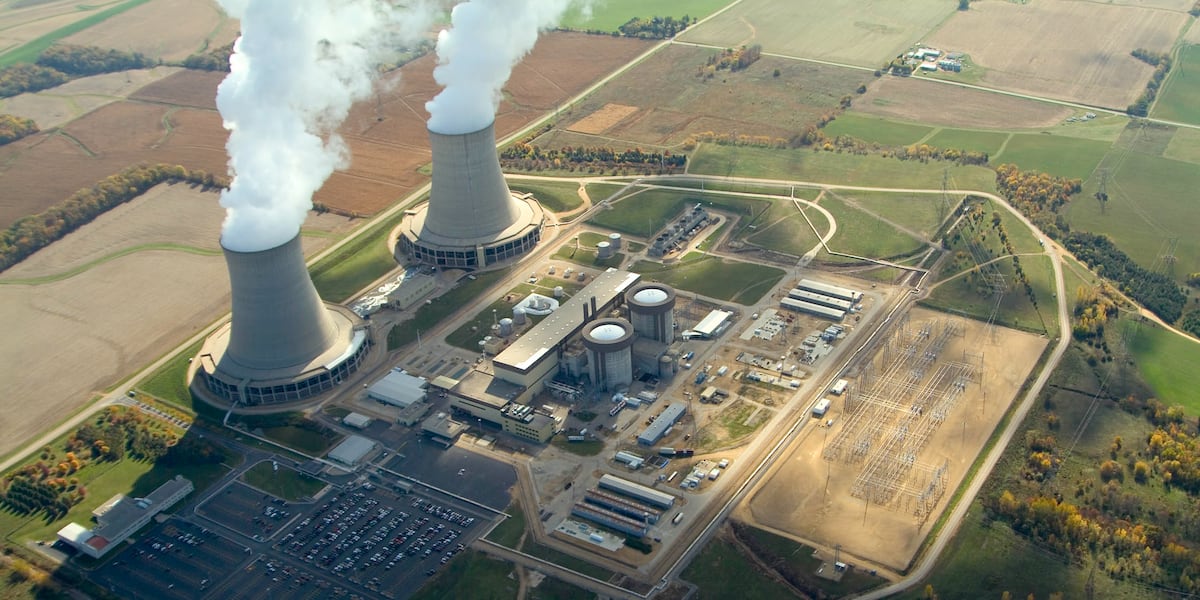Stateline (WIFR) – Green leaves escape buds on trees beside the Byron Clean Energy Center.
From its two nuclear reactors, enough electricity to power more than 1.7 million homes leaves the plant. Lawmakers representing the Rockford-area see the site as the future for Illinois’ needs.
“The world is is going away from fossil fuels and going towards electric,” cautions State Rep. Dave Vella (D-Rockford). “Unless we want to burn a whole bunch of fossil fuels, we go to nuclear because solar and wind’s just not enough.”
In Springfield, Vella sponsors HB3603, a house bill changing the limitations on constructing nuclear power reactors. While Governor J.B. Pritzker lifted a 30-year moratorium on reactors 2 years ago, the lift didn’t impact larger units.
Vella’s bill would allow any “advanced nuclear reactor” to be built. A similar bill moves through the Illinois Senate, where State Sen. Steve Stadelman (D-Rockford) and State Sen. Dave Syverson (R-Cherry Valley) sponsor SB1527.
The Senate bill removes restrictions against reactors generating more than 300 megawatts of electricity “to be located within the State until the Illinois Emergency Management Agency and Office of Homeland Security finds that the United States Government has identified and approved a demonstrable technology or means for the disposal of high level nuclear waste.”
Syverson explains nuclear power is “common sense.” The lawmaker points to “brownouts,” or power drops, in Texas and California – where renewable energy makes up more of the states’ electrical supplies v. a “consistency” in nuclear.
“That’s going to help us keep and attract good paying manufacturing jobs that are high energy users,” argues Syverson.
The Chicago Sun Times reports Illinois leads the nation with the most reactors and takes third place for carbon-free electricity.
For the stateline, Vella and Syverson expect economic investments to arrive if nuclear expands – especially with the possibility of small modular reactors. Both consider Belvidere’s Stellantis Battery Plant as a candidate for an SMR.
”We have great groundwater. We have great natural resources in Illinois. Getting them [manufacturers] here, what they want is they want power,” asserts Vella.
SMRs generate around 300 MW, compared to the more than 2,000 MW from a conventional center like Byron. Although these reactors live up to the “smaller” name, Vella and Syverson believe they can power cities, subdivisions or manufacturers.
“Small modular nuclear reactors wouldn’t power a whole state, but it might be small enough to power a factory or big enough to power a city, depending on how you stack them,” describes Vella.
While some may carry the memory of the Three Mile Island meltdown (or worse, the Chernobyl disaster). Syverson suggests times have changed, and technology’s improved.
“These are things that were 40 years ago. The technology now is so safe,” he maintains – referencing how fast phones have improved in less time.
Although a recent trade agreement between Illinois and the United Kingdom raised the possibility of SMRs in the state, no deal has been made for deployment. So far, only two are active in the world: one each in China and Russia.
Each lawmaker hopes the reactors energize Illinois for a clean, successful future.
“If we want to stay competitive, we have to find reliable energy,” insists Syverson. Vella adds his nuclear support as well.
“That’s the future, and I think Illinois needs to be in the future,” he reasons.
Illinois has a goal of 100% clean energy by 2050. As of 2023, the state generated more than 2/3 of its electricity from “clean” sources, with more than half from nuclear.
Copyright 2025 WIFR. All rights reserved.
